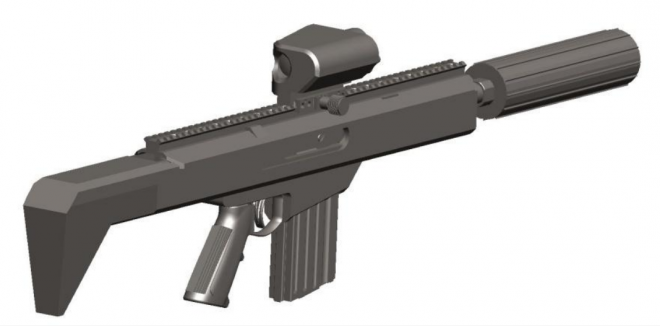Despite the suggestion being raised more than once in Congress, the United States Army will not be buying M27 Infantry Automatic Rifles from Heckler & Koch, but instead is devoting its small arms resources towards the Next Generation Squad Automatic Rifle program, which is now being referred to under the broader name “Next Generation Squad Weapon”. The NGSW program is focused on delivering a new “10x” improvement over current small arms, with the focus primarily on defeating heavy ceramic body armor at combat ranges. According to testimony from Deputy Chief of Staff, G-8 Lt. General John M. Murray during a recent Senate Armed Services Committee hearing, the NGSW program will use an intermediate caliber between 5.56mm and 7.62mm, and leverage lightweight ammunition in the form of cased telescoped (CT) technology. From his testimony:
[The SDMR is] Phase 1. Phase 2 is the development of what we’re calling the Next Generation Squad Weapon. First iteration will probably be an automatic rifle to replace the SAW, which is also a 5.56. We’ve been pushed on the M27 which the Marine Corps has adopted, that is also a 5.56 which doesn’t penetrate, so we’re gonna go down the path of Next Generation Squad Weapon, automatic rifle first, to be closely followed I’m hopeful for either a rifle or a carbine that will fire something other than a 5.56 – it probably won’t be a 7.62, it’ll probably be something in-between. Cased telescoping round, probably polymer casing to reduce the weight of it. We have in the S&T community a demonstration weapon right now – it’s too big, it’s too heavy, but we’ve recently opened it up to commercial industry for them to come in with their ideas about how they would get to that, we’ve offered them some money to come in and prototype for us that type of weapon. We believe with that weapon, with a new ammo, we can achieve probably weights similar to the M4/5.56 ammo, the weapon will probably weigh a little bit more, the ammo will probably weigh a little bit less, and we can get penetration of the most advanced body armor in the world probably well out past the max effective range of the M4, and that’s what we see as a replacement for the M4 in the future, not the SDMR.
Murray’s comments that the NGSW’s ammunition will be capable of defeating ceramic body armor to “well out past the max effective range of the M4” seem to indicate that it is expected to defeat armor out to at least 600 meters – implying a very powerful, and very low drag round. However, Murray’s comments also suggested that the NGSW’s ammunition would be slightly lighter than the current brass-cased 5.56mm ammunition, thanks to its polymer case. These facts, if taken at face value, set bounds for what the NGSW’s ammunition can be. For instance, it seems unlikely that the rumored 6.8mm high velocity round is the current configuration for this ammunition – a bullet of 6.8mm caliber would have to be so heavy (in order to retain its velocity downrange for armor defeat) that it would be virtually impossible to produce a plastic cased telescoped round that matched the weight of 5.56mm. The projectile of such a round, by itself, would have to weigh 8 to 9 grams, which is two-thirds to three-fourths the weight of a complete 5.56mm round (12 grams). Also, armor piercing capability implies a high muzzle velocity, as striking velocity is a major component in penetrating ceramic body armor. With a muzzle velocity of 3,300 ft/s or above, a weapon with an ~9 gram projectile would be very difficult to control, being in the recoil bracket of the 7mm Remington Ultra Magnum, and this fact would not take long to become evident in testing.
In other words, the NGSW’s ammunition is a polymer cased, telescoped round. Based on Murray’s comments, several different calibers are likely in testing at this point, and the resulting round seems likely to be higher caliber than 5.56mm but significantly less than 7.62mm – the 6-6.5mm caliber range being most plausible.
 Your Privacy Choices
Your Privacy Choices
